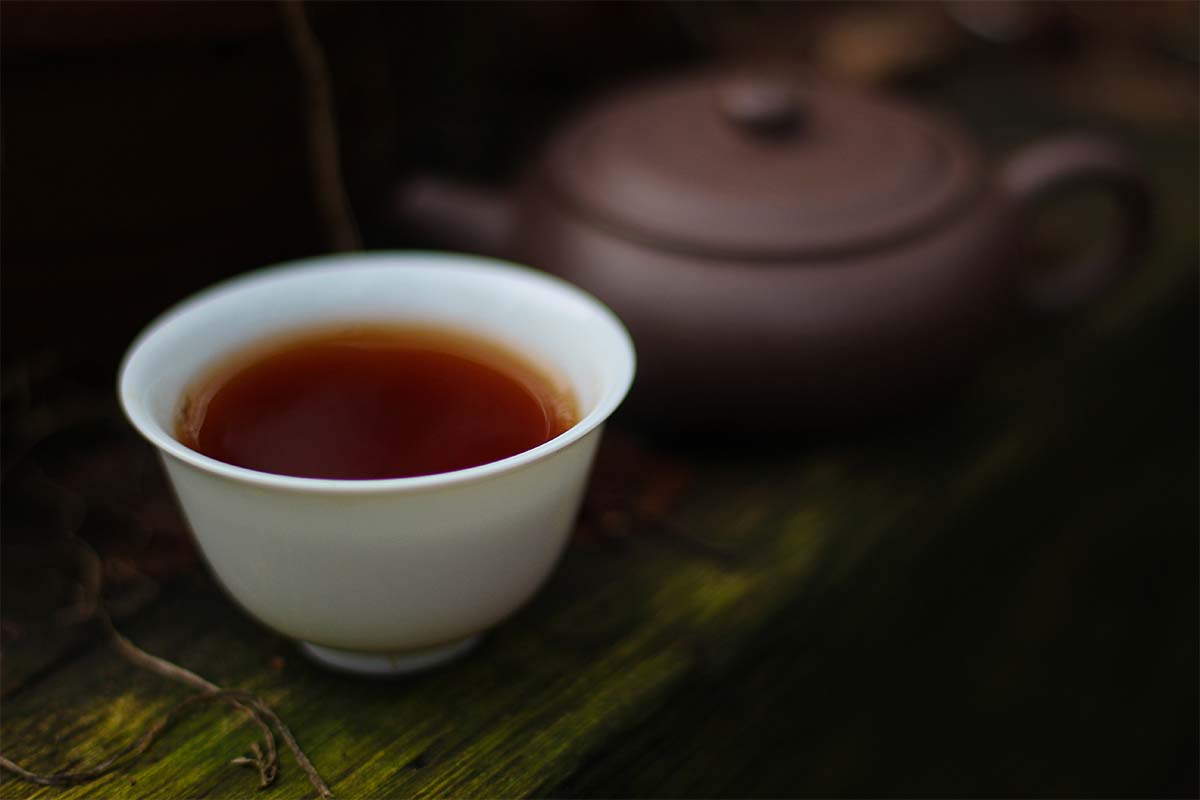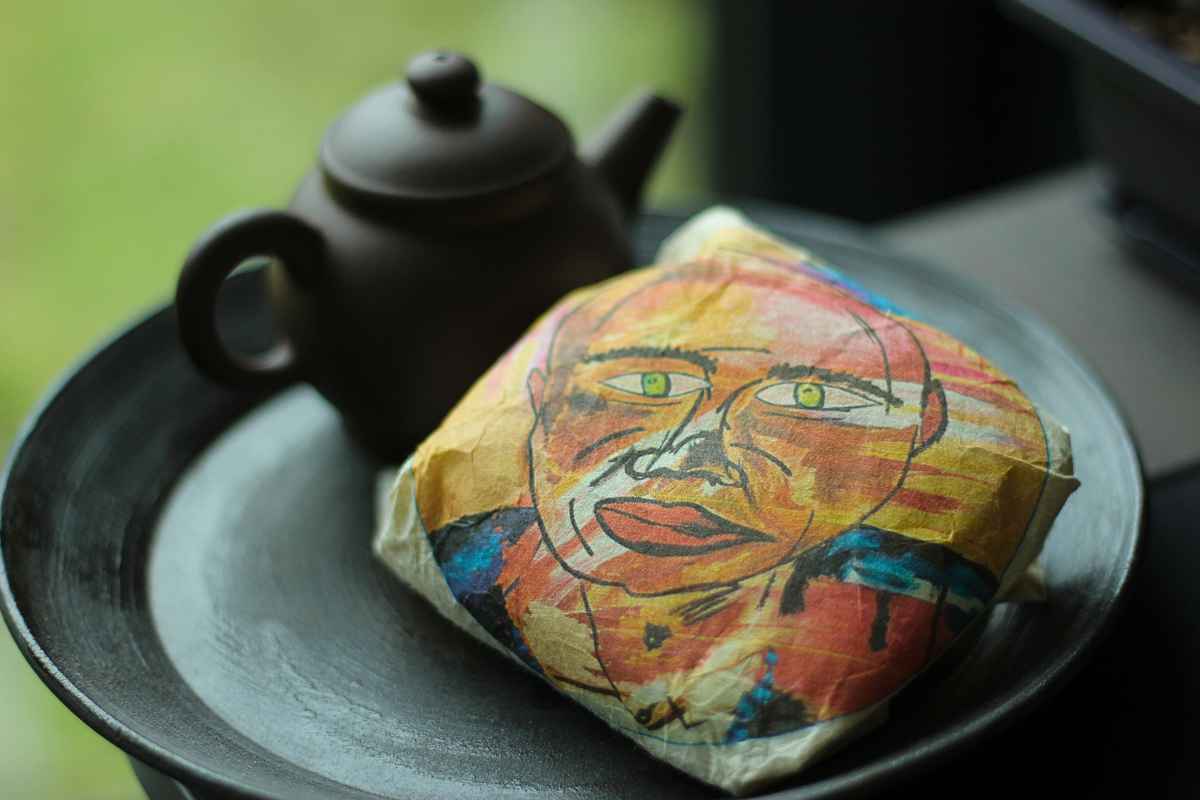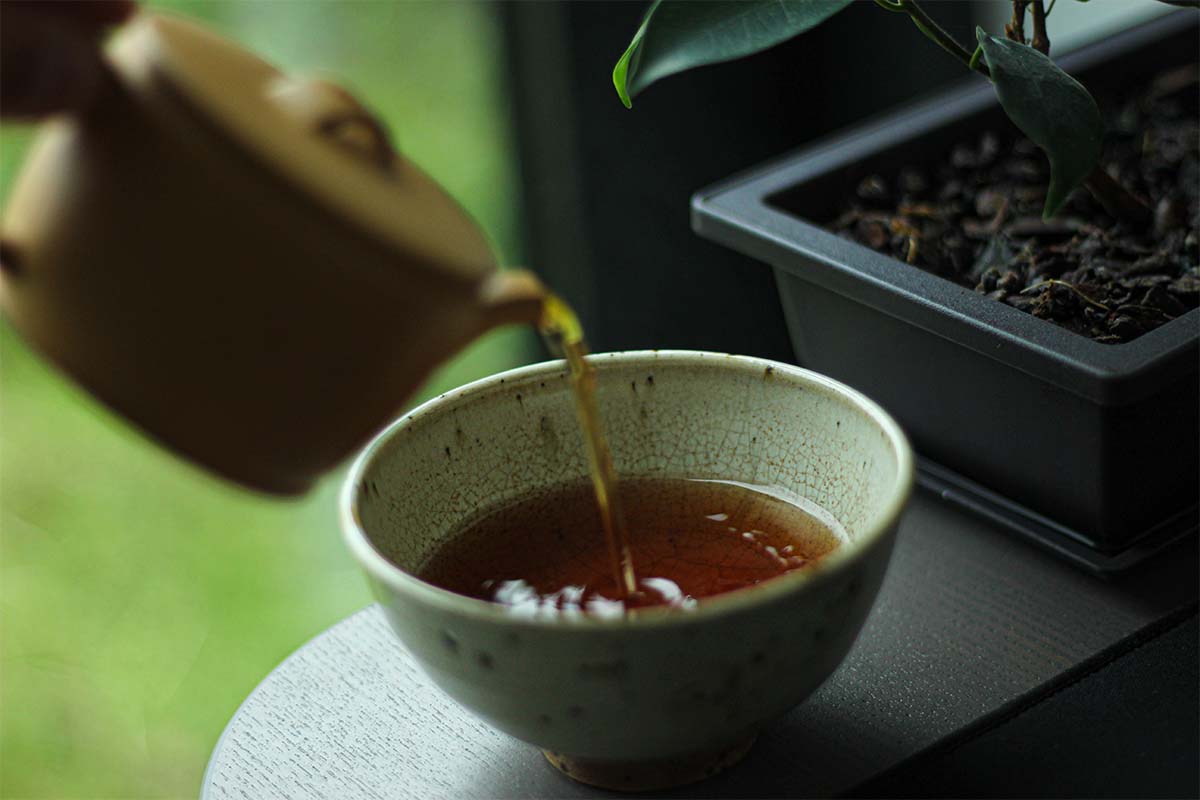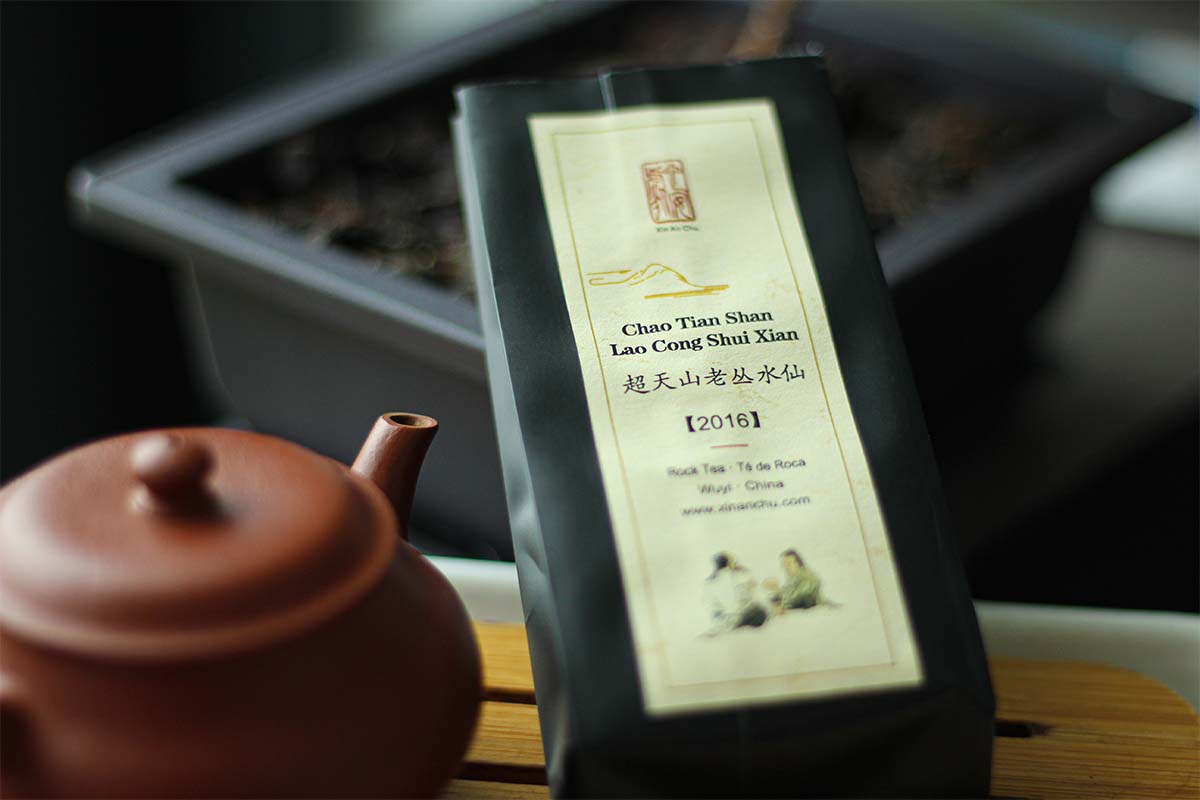Not many people in the west know what Liu Bao tea is but it’s slowly becoming more popular. It has been drunk in China, Hong Kong, and Malaysia for centuries and it’s one of our favorite types of tea as well. But what is Liu Bao tea? This article discusses what it is, how it’s produced, and where it comes from.
Liu Bao tea is a fermented tea from Cangwu County in China’s Guangxi province. It’s made from a medium-leaf variety of the Camellia Sinensis var Assamica plant and has a betel nut flavor profile. It goes through artificial fermentation and is getting more popular in the west for its health properties. It has both a warming and cooling effect on the body and was drunk by miners in Malaysia.
What is Liu Bao?
Liu Bao tea (or Liu Pao tea in English) (六堡茶) is dark tea (hēi chá or 黑茶) from Cangwu in Guangxi province in China. It’s a fermented tea, which means that the leaves are (almost) fully fermented after production.
Pu-erh tea is made using a large-leaf variety, but Liu Bao tea is made from something in-between. It’s not a small-leaf variety and not really a large-leaf variety. You could say that it’s made from medium-leaf varieties. Officially, there are no medium-leaf varieties so if you have to pick one of the existing, it’s large-leaf. The best Liu Bao is also made from gushu old/ancient tea trees, just like pu-erh tea.

Don’t know where to buy tea online? I made a list of over 300 online tea shops and I keep updating it regularly. You can check it over here
Typically, Liu Bao is known for its betel nut flavor characteristics. But what does betel nut taste and smell like? Betel nut is the seed of the areca palm and has been used in a variety of ways in Chinese culture and medicine.
There is some debate, but the typical betel nut flavor profile of Liu Bao is similar to dried areca seeds sliced into discs. In the past, the people from Guangxi were familiar with dried betel nut and were able to compare the two quite easily.
The betel nut flavor profile is described as slightly fruity with a sweet aftertaste and faint hints of wood in combination with a slight bitterness. In some older Liu bao teas, camphor is noticeable as well.
Where does Liu Bao come from?
The name Liu Bao literally means ‘six castles/forts’ and refers to the area where this tea comes from. In the past, there were many stone castles in Europe, but that wasn’t the case in China. That is why ‘fort’ works better here because there were big wooden forts in the area instead of stone castles.
Liu Bao tea comes from a village in Cangwu County, Wuzhou City, in Guangxi province where there were six wooden forts a long time ago. As you might have guessed, this village was called ‘Liu Bao’. This is the place where this type of tea was first produced.


Guangxi is a tea region with a rich history and ideal environment to grow tea. Wild tea plants have been growing there for hundreds (and maybe even thousands) of years! Experts say that the production of Liu Bao tea in Guangxi dates back more than 1500 years.
Nowadays, Liu Bao tea is classified as all black tea from Wuzhou and the neighboring regions in Guangxi province. However, the tea needs to be produced using the traditional Wuzhou method. The classification based on location isn’t as strict as it used to be, but the production methods have to be the same.
How is Liu Bao tea made?
The production of Liu Bao tea is similar to that of shou pu-erh, but there are some differences. The biggest similarity is that Liu Bao also goes through artificial fermentation by piling the tea leaves. This process is known as wo dui (wò dūi or 渥堆 in Chinese). This is the main reason Liu bao and shou pu-erh seem similar at first sight. Before artificially fermenting the tea leaves, some other steps are needed first.

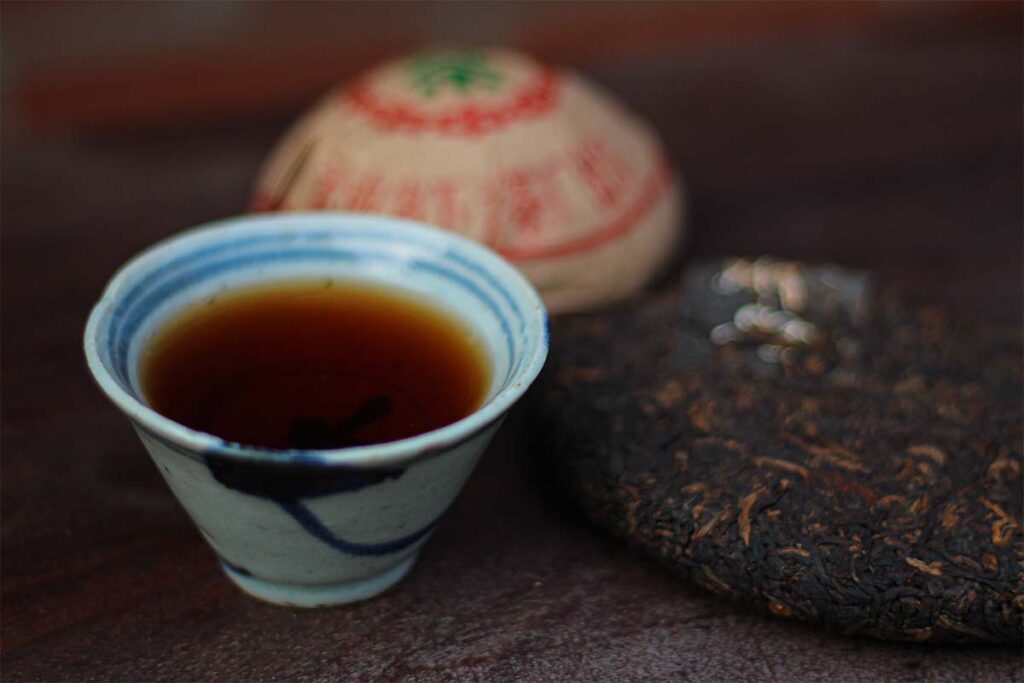
The tea leaves are picked, then left to wither for a while so they lose some moisture. The leaves are then de-enzymed to stop oxidation (which is called ‘sha qing’) and after that, they are rolled and fixed to get the desired shape. Finally, the leaves are wet-piled and put into baskets to age for a while before being sold.
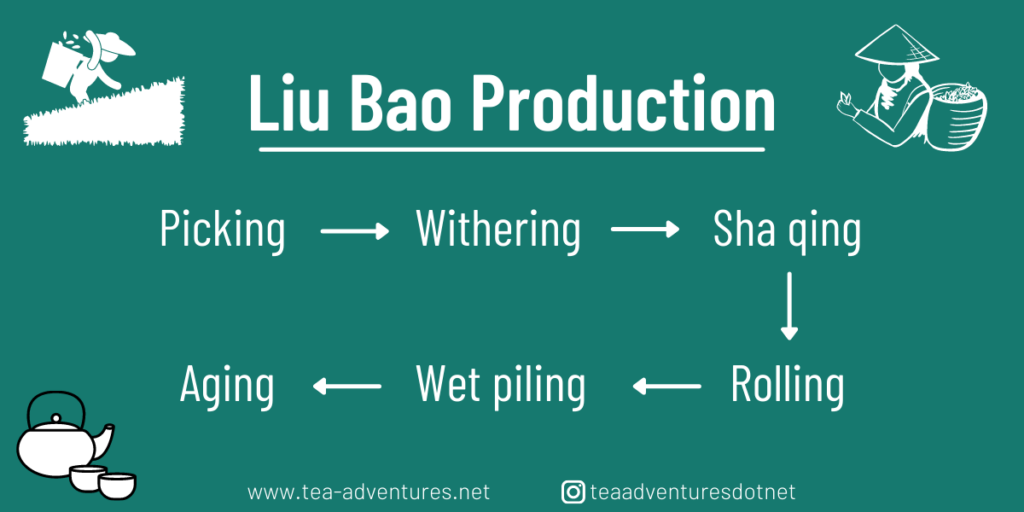
Steaming the tea leaves is an important step in the production process that has changed over the years. Initially, the tea leaves were steamed three times; the first time during the sha qing process, the second time during the piling process, and a final time for compression.
From the second part of the 20th century, the production process changed and Liu Bao was only steamed once. The initial steaming process to de-enzyme the leaves was replaced by a wok-firing. The second steaming during the piling process was also replaced by spraying the leaves with water and piling them.
After the fermentation process, the tea leaves were usually pressed into big 40-50kg baskets and stored in air-raid tunnels for several years to let them rest. It was only after 1-3 years that the baskets were moved again and put into warehouses and storage facilities to age further. Nowadays, It’s common to (re)package Liu Bao into smaller baskets of around 1kg and to shorten the initial ‘resting’ phase because the demand is a lot higher than what it used to be.
What is special about Liu Bao tea?
Liu Bao is known for several reasons but there is one specific reason that made it really popular in the east. It even became an everyday commodity in Hong Kong and especially in Malaysia. Malaysia can be seen as the capital of Liu bao tea.
Many Chinese immigrant workers went to work in the Malaysian tin mines but the conditions in those mines were harsh, dangerous, and difficult. Liu Bao tea helped the workers to expel heat and dampness so they wouldn’t get sick. Tons of Liu Bao tea was shipped to Malaysia and because of this, there was a huge amount of Liu Bao stored there.
Liu Bao tea is extraordinary because it is both warming and cooling at the same time. Due to the artificial fermentation process, it has the ability to give you a warm feeling in winter. However, when you drink it on a hot day in summer, it has a cooling effect and offers some refreshment.

